“Eat your beets.”
That’d be mom talking to her son Zack.
Zack doesn’t like what he sees. These round globs are red. Dark red. They appear to be bleeding. His mother says, “You’ll love them. Trust me.” Zack, of course, loves his mom. Trust is another story.
Mom says, “They’re really good for you.” Zack thinks, I most certainly do not care.
Mom says, “I used to love beets when I was your age.” Zack thinks, you’ve played that card one too many times mom and your credibility isn’t real high after sending me to class photos in a paisley bowtie telling me I look handsome.
Mom thinks about calling in dad, but he’s a bit of a pushover when it comes to the eat-your-vegetables exercise. His credibility’s in the tank too thanks to promising Zack all summer long the Cubs would play in the World Series.
This scene concludes with no beet eating whatsoever. Cut.
Now let’s imagine a different scenario. It’s lunchtime at school. Zack’s with his buddy. We’ll call him Jake (since most boys go by this name now).
Jake’s a trustworthy dude. Cool too. His parents let him wear a Ninja Turtles shirt for pictures. His Avengers lunchbox is off-the-charts dope and everything that springs from it has proven to be tasty. Just last week Jake gave Zack his first taste of Reese’s Pieces. Yesterday was birthday cake flavored Oreo cookies. Suffice to say, with Jake as his culinary advisor, Zack can’t go wrong.
What if Jake recommends eating beets to Zack?
If you’re wondering what today’s most powerful marketing asset is, wonder no further. It’s social recommendations. They can render the most powerful Avenger powerless, catapult any brand, and get Zack to eat beets.
In social circles, consumers are hyper-tuned into the opinions others share. They care about reviews from “the crowd,” but even more about what their friends think. This unequaled power of persuasion is often called the “wisdom of friends.”

An excerpt from a recent infographic from Loot indicates recommendations from friends blow away other forms of marketing.
Without question, the fuel turning the pistons in the engine room of super-powered marketing machines is recommendations. In the social media world, you now need make your brand the one people recommended.
Word-of-mouth makes the register ring
Nielsen and Roper Reports delivered this finding: 92% of all consumers report a word-of-mouth recommendation is the “leading reason they buy a product or service.”
In recent years, as this notion has become an accepted truth, a specialty business that goes by the name of “brand advocacy” has emerged. Zuberance is amongst the companies that have focused on the discipline. As the result of anin-depth study conducted in 2012, Zuberance reports:
- Brand advocates, relative to average consumers, recommend more brands, products, and services—more often and in more categories.
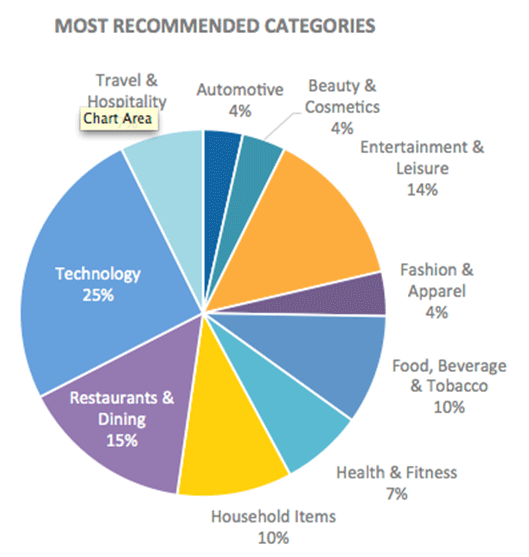
According to Zuberance, brand advocates make recommendations across multiple industries, with technology being the most popular category.
- They have large and growing social networks, so their recommendations reach many more people.
- The recommendations they make aren’t limited to consumer brands. Brand advocates recommend consumer and business products and services, including products most people consider mundane.
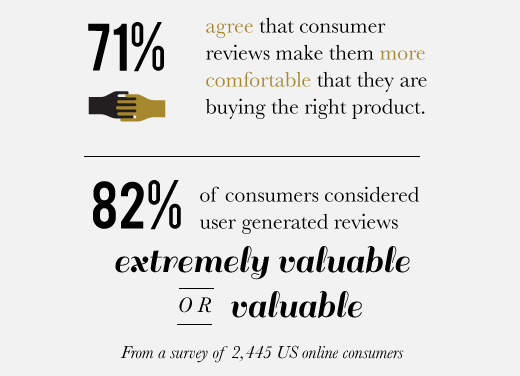
From “The Review of Reviews,” an infographic by PeopleClaim.com
How to get your brand recommended
In his 2013 book, “Highly Recommended: Harnessing the Power of Word of Mouth and Social Media to Build Your Brand and Your Business,” Paul M. Rand, lays out a 5-part plan for how your business can become highly recommended.
1. Understand where and how your brand’s talked about
As a first step, Rand says you need to know and understand what drives people to make recommendations as well as the language they use. The key here is using social listening tools to monitor conversations about your brand and your competitors.
2. Plan a recommendable brand strategy
You need to document a “shareable story” to determine how you want your brand talked about and recommended. Rand suggests developing your shareable story in the simple, conversational language a brand advocate would use in conversation with a friend.
Everyone in the company should rally around the same story. Your subsequent efforts focus on activating potential customers via social media through each step of your sales cycles: awareness, engagement, action, and recommendation.
3. Identify influencers
Understand, you need allies to take your recommendation marketing to the next level. Work to identify the people whose recommendations influence purchase decisions. While you don’t deliberately pitch influencers, you should find ways to work together and build relationships.
4. Engage
Give influencers something to talk about. Rand suggests using a 90/10 rule as you engage the people invested in your message.
The rule states you spend 90% of your time engaging with people across your communication channels by exchanging information, asking for input, and listening. The remaining 10% of your time is spent sharing your brand messages and encouraging people to take action.
5. Protect
It’s important to protect your brand by finding and attempting to mitigate negative voices and misinformation.
Rand cites research, which reports 67% of consumers say they would not buy a product if it had as few as three negative reviews. He offers tips for proactively protecting your brand’s image, which I’ll paraphrase:
- Keep your cool. Monitor the traction of the message and understand its reach before engaging with the detractor.
- Have an escalation plan for dealing with these different types of “detractor” challenges in a clear and proactive way.
- Monitor online chatter, be aware of your position in the marketplace and be ready to play offense in defense of your brand.
The rise of “word of mouse”
Word of mouth is the strongest recommendation channel, which is a fact that’s been holding strong for many years. However, interestingly, with the rising prominence of social media, comes a rise in “word of mouse.”
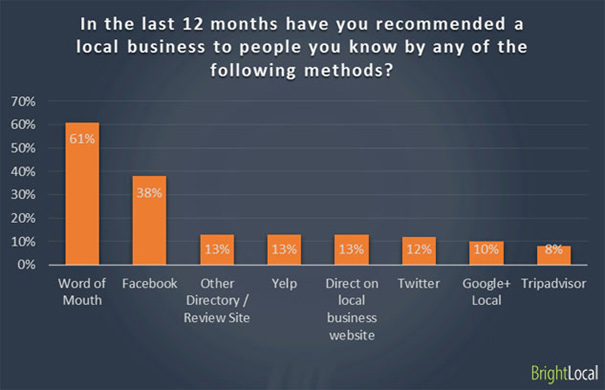
BrightLocal’s research finds Facebook and Twitter are growing as recommendation channels, which suggests that local (or perhaps any) business may want to focus more effort on these channels.
It’s also worth noting (according to BrightLocal’s 2013 research) 79% of consumers trust online reviews as much as personal recommendations (up from 72% in 2012). Only 21% said they do not trust online reviews as much as personal recommendations.
The smart thing to do with this information
You need to put recommendations at the center of your marketing mix.
Develop a story for how you want to be recommended. Understand how your company and its competitors are being talked about. Identify and engage the influencers whose opinions can sway others. And develop the tools that make it easy for your fans to recommend your product.
Recommendations—offline and on—will make Beats sound better and beets seem tastier.

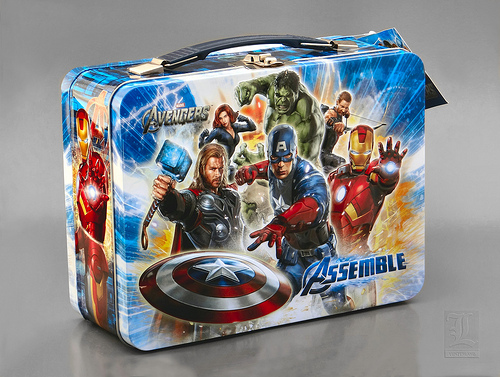


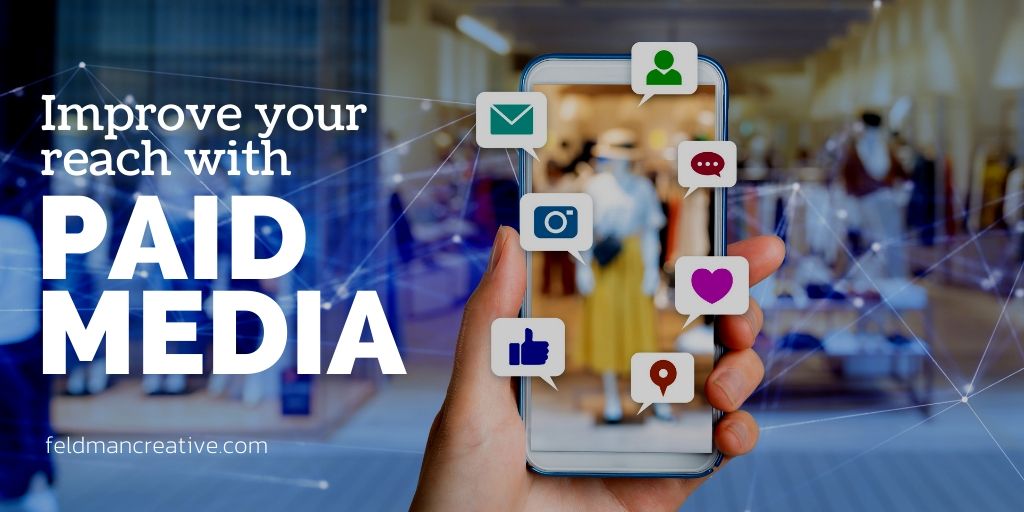


Comments
The Power of Social Recommendations, Word of Mouth Marketing and the Coolest Kid in Kindergarten | Drip Logic
[…] beets, bad ass lunchboxes and the power of social recommendations. All here. Click To Tweet – Powered By […]
The Power of Social Proof
[…] If you want to elevate your sway, develop strategies to put social proof to work in your online communications. Barry Feldman […]